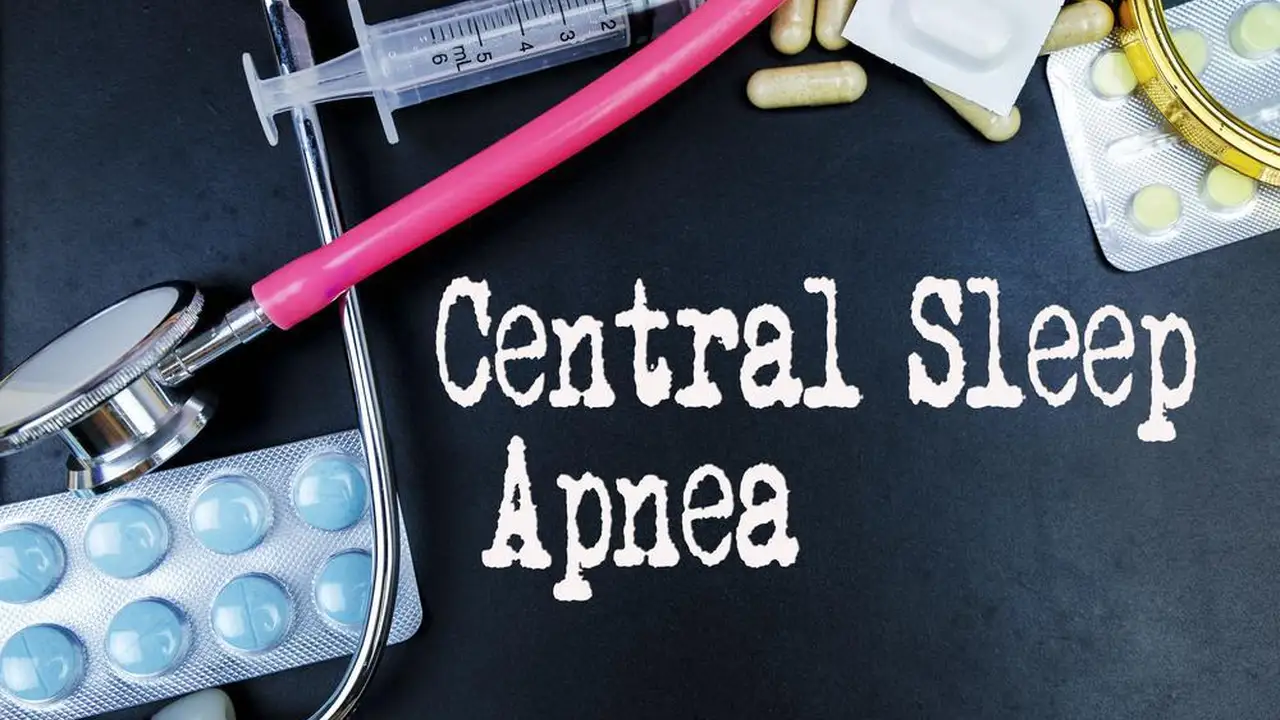Delayed Sleep Phase Syndrome (DSPS): Understanding and Managing
Sample meta description.
: Understanding and Managing.webp)
What is Delayed Sleep Phase Syndrome DSPS and How Does it Affect Your Sleep Cycle
Okay, so you're staring at the ceiling at 2 AM again? Everyone has trouble sleeping now and then, but if you're consistently hitting the pillow way later than everyone else and struggling to wake up in the morning, you might be dealing with Delayed Sleep Phase Syndrome, or DSPS. Think of it like your internal clock is set on Pacific Standard Time when everyone else is on Eastern. It's not just being a night owl; it's a real circadian rhythm disorder.
Basically, your body's natural sleep-wake cycle is shifted later than what's considered normal. This means you naturally feel sleepy later at night and struggle to wake up at a "normal" time. Trying to force yourself to sleep earlier is like trying to push two magnets together – it just doesn't work. And constantly fighting your body's natural rhythm leads to all sorts of problems, from daytime sleepiness to mood swings and even trouble focusing at work or school.
Understanding the Symptoms and Diagnosis of DSPS Sleep Disorder
So, how do you know if you're dealing with DSPS and not just a temporary bout of insomnia? Here are some key signs:
- Difficulty falling asleep at a conventional bedtime: We're talking 10 PM or 11 PM. If you're wide awake and alert at that time, that's a clue.
- Difficulty waking up at a desired time: Hitting snooze isn't just a bad habit; it's a necessity because your body simply isn't ready to wake up.
- Feeling most alert and productive in the evening and at night: You're a night owl, sure, but it's more than that. You actually *function* better late at night.
- Improved sleep on weekends or holidays: When you can sleep in, your sleep schedule normalizes, and you feel much better.
- Daytime sleepiness and fatigue: Because you're not getting enough sleep at the right time, you're constantly tired during the day.
If these symptoms sound familiar, it's worth talking to your doctor. They can diagnose DSPS through a sleep history, physical exam, and potentially a sleep study (polysomnography) or actigraphy (a wrist-worn device that tracks your sleep-wake patterns). Don't just self-diagnose; get a professional opinion.
Effective Strategies for Managing DSPS Sleep Phase Disorder
Alright, so you've been diagnosed with DSPS. What now? The good news is that there are several strategies you can use to manage the condition and improve your sleep schedule. It takes effort and consistency, but it's definitely possible to shift your internal clock.
- Chronotherapy: This involves gradually delaying your bedtime and wake time by 1-2 hours each day until you reach your desired schedule. It sounds counterintuitive, but it can help reset your circadian rhythm. It’s a bit extreme and requires strict adherence.
- Light Therapy: Exposure to bright light, especially in the morning, can help suppress melatonin production and signal to your body that it's time to wake up. Conversely, avoiding bright light in the evening can help you feel sleepy at night.
- Melatonin Supplements: Melatonin is a hormone that regulates sleep. Taking a low dose of melatonin a few hours before your desired bedtime can help shift your sleep phase. Talk to your doctor about the right dosage for you.
- Strict Sleep Hygiene: This is crucial. That means maintaining a consistent sleep schedule (even on weekends!), creating a relaxing bedtime routine, avoiding caffeine and alcohol before bed, and making sure your bedroom is dark, quiet, and cool.
The Role of Light Therapy for DSPS Circadian Rhythm Correction
Let's dive deeper into light therapy. This is often one of the most effective treatments for DSPS. The idea is to use a special light box that emits bright, white light to mimic sunlight.
How it works: When light enters your eyes, it signals to your brain to suppress melatonin production, which is the hormone that makes you feel sleepy. By exposing yourself to bright light in the morning, you can help shift your circadian rhythm earlier.
How to use it: Aim for 30-60 minutes of light therapy each morning, ideally as soon as you wake up. Place the light box about 1-2 feet away from you and angle it slightly so the light enters your eyes. You don't need to stare directly at the light; you can read, eat breakfast, or work while using it. Consistency is key!
Light Therapy Box Recommendations:
- Carex Day-Light Classic Plus: A popular and well-regarded light box that provides 10,000 lux of bright white light. It's a bit pricier (around $150-$200), but it's known for its effectiveness and durability. Ideal for home use, especially during the darker winter months.
- Verilux HappyLight Liberty VT20: A more affordable option (around $40-$60) that still provides 10,000 lux. It's smaller and more portable, making it a good choice for travel or for using at your desk. However, some users find it less powerful than the Carex model.
- Northern Light Technologies Boxelite Desk Lamp: This is a higher end option that is more stylish and can easily fit into a work environment. It can cost around $250-$300 but it is more discrete as it looks like a typical desk lamp.
Comparison: The Carex is more powerful, while the Verilux is more portable and affordable. The Northern Light Technologies is the most stylish, but also the most expensive. Consider your budget, lifestyle, and the severity of your DSPS when choosing a light box. Before using any light therapy box, consult with your doctor to ensure it's safe for you.
The Role of Melatonin Supplements in Treating DSPS Sleep Issues
Melatonin supplements can also be a helpful tool for managing DSPS. Melatonin is a hormone that your body naturally produces to regulate sleep. Taking a supplement can help signal to your brain that it's time to sleep.
How it works: Melatonin supplements can help shift your circadian rhythm by making you feel sleepy earlier in the evening. This can make it easier to fall asleep at your desired bedtime.
How to use it: Take a low dose of melatonin (0.3-1 mg) about 2-3 hours before your desired bedtime. Start with the lowest dose and gradually increase it if needed, but don't exceed 5 mg without talking to your doctor. It's important to take melatonin at the same time each night and to avoid using it if you're not planning to go to sleep soon.
Melatonin Supplement Recommendations:
- Natrol Melatonin Fast Dissolve Tablets: A popular and affordable option that dissolves quickly in your mouth. They come in various dosages, making it easy to find the right amount for you. Around $10-$15 for a bottle of 90 tablets.
- Nature Made Melatonin Tablets: Another reliable brand that offers melatonin in tablet form. They're slightly more expensive than Natrol, but they're known for their quality and purity. Around $12-18 for a bottle of 120 tablets.
- Source Naturals Sublingual Melatonin: These tablets dissolve under the tongue which allows for faster absorption into the bloodstream. This can be helpful for people who have trouble swallowing pills. They cost around $15-$20 for a bottle of 120 tablets.
Comparison: All three options are effective, but the fast-dissolving tablets may be a better choice if you have trouble swallowing pills. The sublingual tablets offer faster absorption, but may be more expensive. As with light therapy, consult with your doctor before taking melatonin supplements, especially if you have any underlying health conditions or are taking other medications.
Lifestyle Adjustments for Improved Sleep Hygiene and DSPS Management
Beyond light therapy and melatonin, there are several lifestyle adjustments you can make to improve your sleep hygiene and manage DSPS.
- Create a relaxing bedtime routine: This could include taking a warm bath, reading a book, listening to calming music, or practicing relaxation techniques like meditation or deep breathing.
- Make your bedroom a sleep sanctuary: Keep it dark, quiet, and cool. Use blackout curtains, earplugs, or a white noise machine to block out distractions.
- Avoid caffeine and alcohol before bed: These substances can interfere with your sleep cycle.
- Exercise regularly, but not too close to bedtime: Exercise can improve sleep, but avoid working out within a few hours of going to bed.
- Limit screen time before bed: The blue light emitted from electronic devices can suppress melatonin production.
- Maintain a consistent sleep schedule, even on weekends: This is crucial for regulating your circadian rhythm. Try to go to bed and wake up at the same time each day, even when you don't have to.
When to Seek Professional Help for Persistent DSPS Sleep Problems
If you've tried these strategies and are still struggling with DSPS, it's important to seek professional help. A sleep specialist can provide a more comprehensive evaluation and recommend additional treatments, such as cognitive behavioral therapy for insomnia (CBT-I) or prescription medications.
Don't suffer in silence. DSPS can have a significant impact on your quality of life. With the right treatment and lifestyle adjustments, you can manage your condition and get back to sleeping well.
:max_bytes(150000):strip_icc()/277019-baked-pork-chops-with-cream-of-mushroom-soup-DDMFS-beauty-4x3-BG-7505-5762b731cf30447d9cbbbbbf387beafa.jpg)






